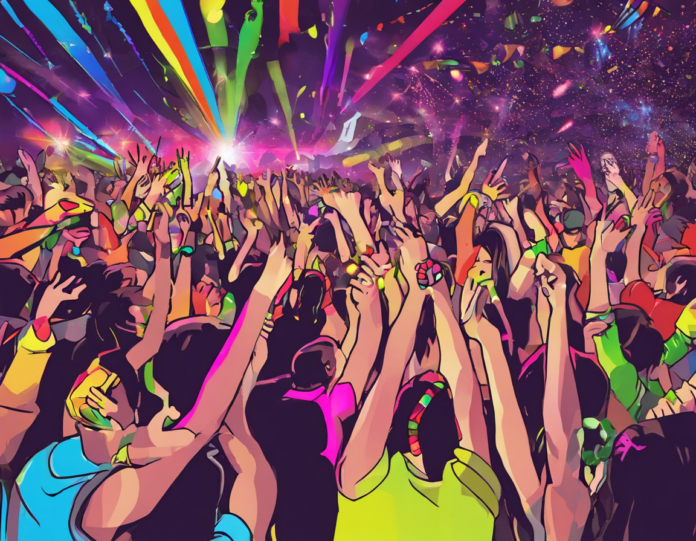Rave parties have long been a phenomenon in the realm of music and nightlife, characterized by energetic music, colorful lights, and a vibrant atmosphere. They are popular among the younger generation, offering an escape from the mundane routine of everyday life. However, there is much more to rave parties than meets the eye. Behind the flashing lights and booming beats lies a rich subculture with its own norms, values, and history. In this article, we will delve deeper into the world of rave parties to understand the culture, community, and significance they hold for many individuals.
The Origins of Rave Culture
Rave culture has its roots in the 1980s, emerging from the underground dance scene in cities like Detroit, Chicago, and London. Influenced by electronic music genres such as techno, house, and trance, rave parties provided a platform for individuals to come together and express themselves through music and dance. The acid house movement in Britain played a significant role in popularizing rave culture, with its all-night dance parties and emphasis on unity and peace.
Key Elements of Rave Parties
1. Music
Electronic dance music (EDM) lies at the heart of rave culture, with DJs and producers playing a mix of techno, house, trance, dubstep, and other genres to keep the crowd energized and engaged. The beats per minute (BPM), bass drops, and melodic elements of EDM create a unique auditory experience that resonates with ravers.
2. Lights and Visuals
Rave parties are known for their spectacular light shows, laser displays, and visual projections that enhance the overall ambience of the event. These visuals synchronize with the music, creating a multisensory experience for attendees.
3. Fashion
Ravers often express themselves through bold and colorful outfits, accessories, and body paint, reflecting the creative and eccentric nature of rave culture. Glow sticks, LED jewelry, and fluorescent clothing are common accessories worn at rave parties.
4. PLUR Ethos
The PLUR ethos (Peace, Love, Unity, Respect) forms the foundation of rave culture, promoting inclusivity, empathy, and compassion among attendees. Ravers embrace diversity and tolerance, creating a welcoming and non-judgmental environment for all.
Evolution of Rave Culture
Over the decades, rave culture has evolved and adapted to changing trends and technologies. The rise of social media and streaming platforms has expanded the reach of rave culture, allowing enthusiasts from around the world to connect and share their love for EDM. Festivals like Tomorrowland, Ultra Music Festival, and Electric Daisy Carnival have become global phenomena, attracting thousands of ravers each year.
The Role of Rave Parties in Society
Rave parties serve as more than just entertainment; they also provide a space for self-expression, community building, and spiritual exploration. For many individuals, raves offer an escape from the pressures of everyday life, allowing them to connect with like-minded individuals and experience a sense of belonging.
The Dark Side of Rave Culture
While rave culture is often associated with positivity and freedom, it also has a darker side characterized by substance abuse, overcrowding, and safety concerns. The use of MDMA (ecstasy) and other drugs is prevalent at many rave parties, posing risks to the health and well-being of attendees. Additionally, incidents of violence and sexual assault have been reported at some events, raising questions about the safety and regulation of rave culture.
FAQs
1. Are rave parties illegal?
Rave parties themselves are not illegal, but certain activities associated with them, such as drug use and underage drinking, may be illegal depending on the location and circumstances.
2. How can I stay safe at a rave party?
To stay safe at a rave party, it is essential to stay hydrated, know your limits with alcohol and substances, travel in groups, and look out for one another. Additionally, be aware of the venue’s emergency exits and medical services.
3. Is it necessary to dress a certain way for a rave party?
There is no specific dress code for rave parties, but many attendees opt for comfortable and expressive clothing that allows them to dance and move freely. Glow accessories and bright colors are popular choices to enhance the rave experience.
4. How can I participate in rave culture without using drugs?
Rave culture is about music, dance, and community, not just substance use. You can fully participate in rave culture by enjoying the music, connecting with others, and embracing the PLUR ethos without the need for drugs.
5. Are there age restrictions for attending rave parties?
Age restrictions for rave parties vary depending on the event and venue. Some parties may be all-ages, while others may require attendees to be 18 or 21+. It is important to check the event details before attending to ensure compliance with age restrictions.
In conclusion, rave culture is a vibrant and multifaceted phenomenon that continues to captivate individuals around the world. By understanding the origins, key elements, evolution, and societal significance of rave parties, we gain insight into the rich tapestry of this unique subculture. While challenges exist, such as drug use and safety concerns, the core values of inclusivity, creativity, and connection remain at the heart of rave culture, shaping experiences that go beyond the music and lights, fostering a sense of community and belonging for those who partake in the rave experience.
